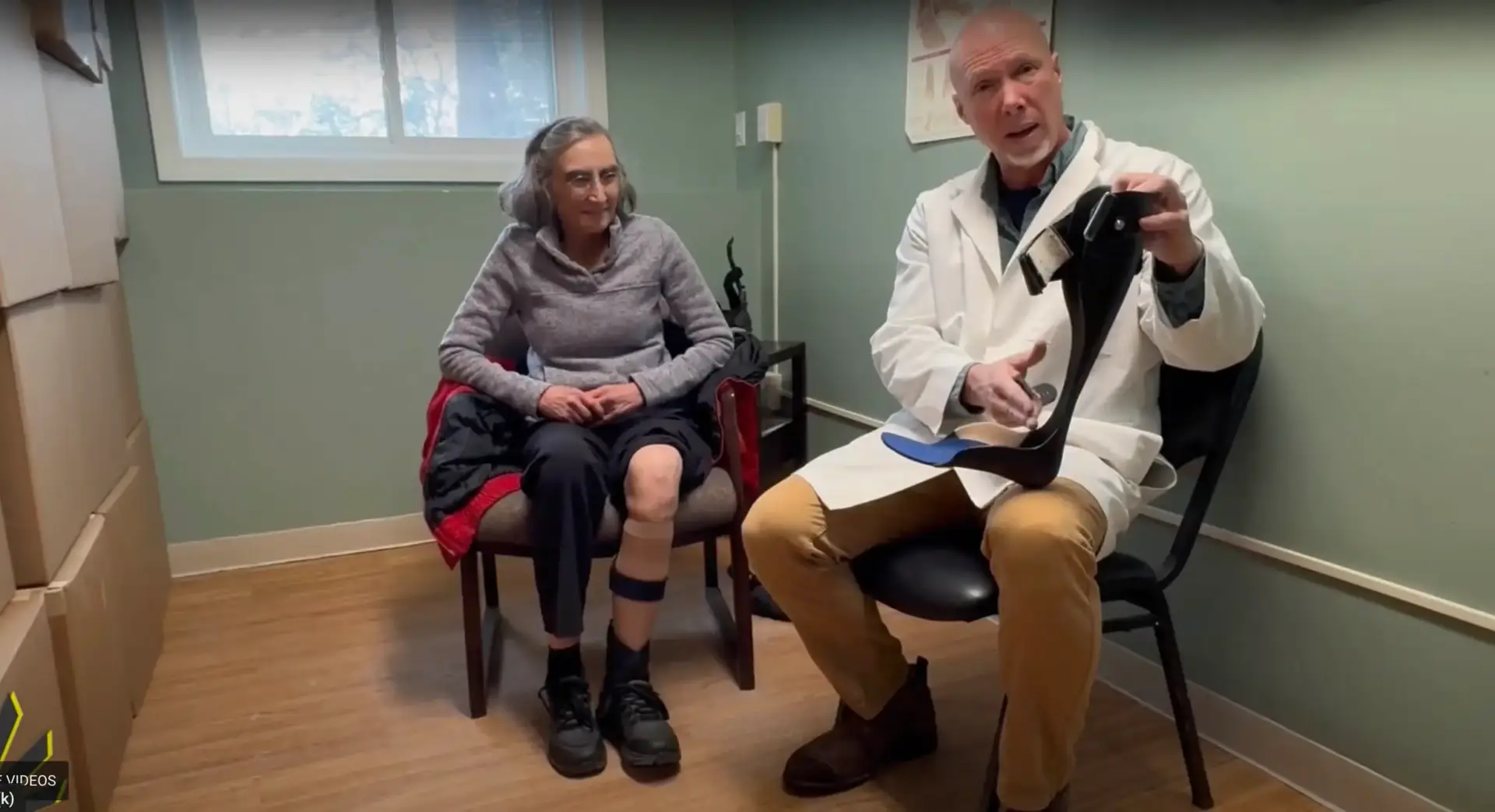Elaine Compares Her Carbon Fiber Brace with Step-Smart Brace for Drop Foot
Hi, it’s Ian, I’m with Elaine. Elaine comes
Drop Foot, also known as foot drop, is a condition where you have difficulty lifting the front part of your foot, making it challenging to walk and maintain balance. It can be caused by various underlying conditions such as nerve injuries, muscle weakness, or neurological disorders.
It’s recommended to consult with a healthcare professional for an accurate diagnosis and to create a tailored exercise plan based on your specific needs and condition. However, here are some general exercises and strategies that may help improve the strength and function of the muscles involved in foot dorsiflexion (lifting the foot):
Ankle Pumps:
• Sit with your legs straight.
• Move your foot up and down at the ankle, trying to flex your toes upward as much as you can.
• Perform this exercise for 2-3 minutes, several times a day.
Toe Tapping/Toe Raises:
• While sitting with your feet flat on the floor, lift your toes as high as possible while keeping your heel on the ground.
• Lower your toes back down.
• Repeat this motion for 2-3 minutes, several times a day.
Resistance Band Exercises:
• Attach a resistance band to a sturdy object and loop it around the top of your foot.
• Sit on the floor with your legs straight and pull your toes upward against the resistance of the band.
• Release the tension slowly.
• Perform 2-3 sets of 10-15 repetitions on each foot.
Balance and Coordination Exercises:
• Stand on one leg for as long as you can while maintaining your balance. Use a chair or wall for support if needed.
• Practice standing on tiptoes on both feet to improve overall balance and strength.
Gentle Stretching:
• Stretch your calf muscles and Achilles tendon regularly to maintain flexibility.
Remember to start with low repetitions and gradually increase them as your strength improves. If you experience pain or discomfort during any exercise, stop immediately and consult with a healthcare professional. Additionally, physical therapy and assistive devices such as the Step-Smart Brace may be recommended as part of your treatment plan.
Hi, it’s Ian, I’m with Elaine. Elaine comes

Hi, it’s Ian from Insightful. I’m pleased to introduce you to Gail who came from Connecticut

Hey there, it’s Ian from Insightful. We have Chris here who came from Framingham, MA, and he has flail foot
367 U.S. Route 1, Suite 5-S
Falmouth, ME 04105
(207) 885-0414
faq@insightfulproducts.com

Site by Fisher Green Creative. LLC